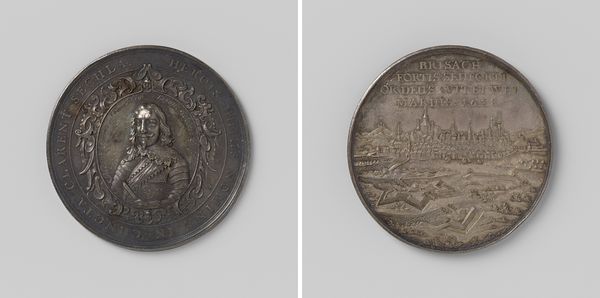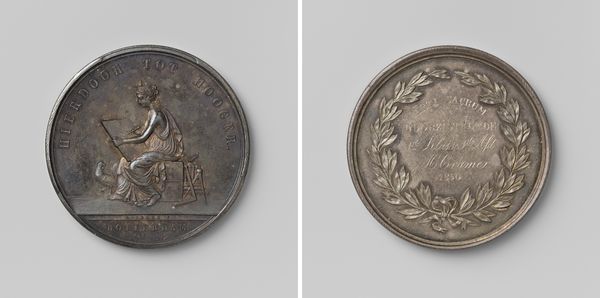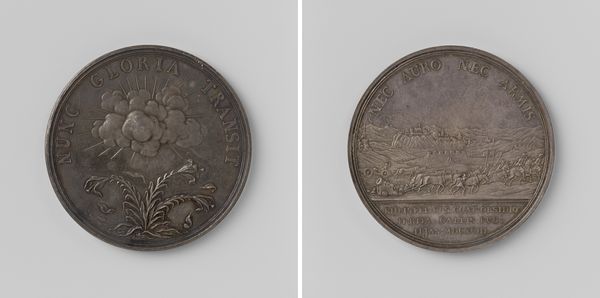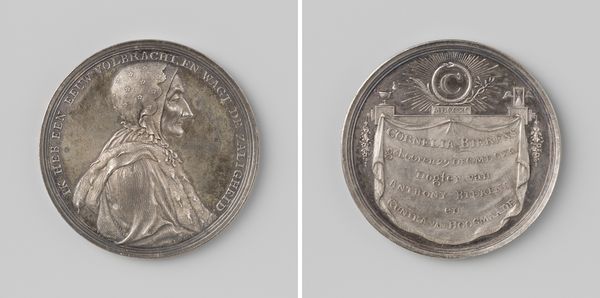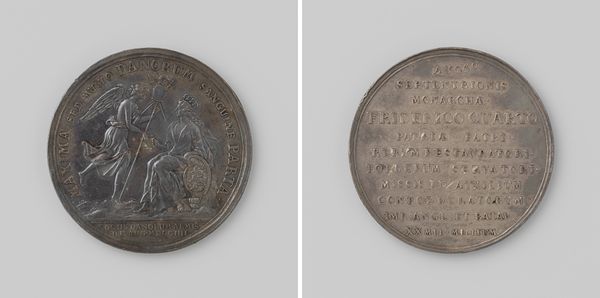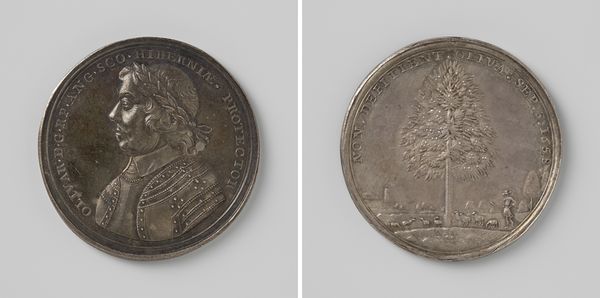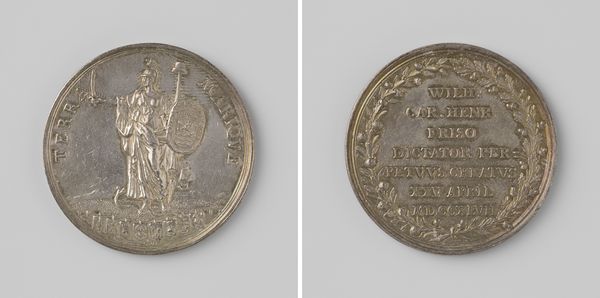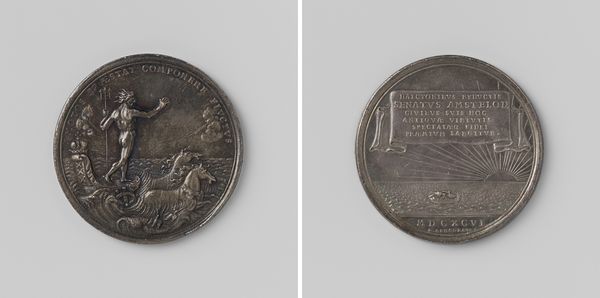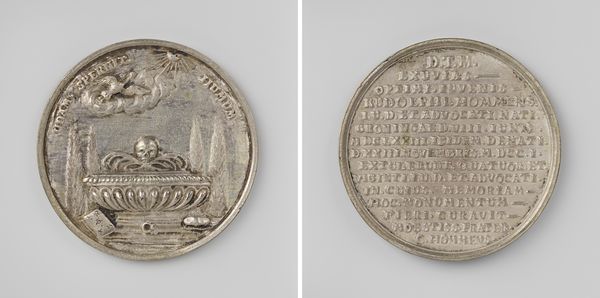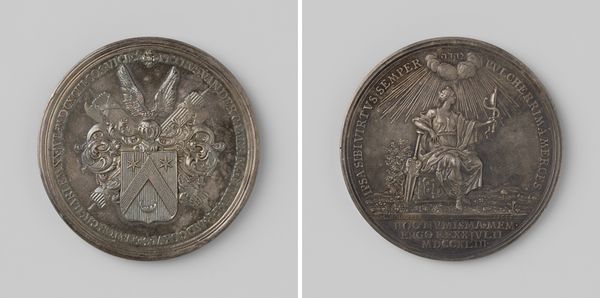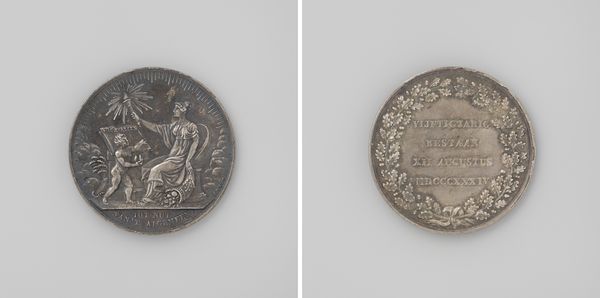
Vijftigjarig bestaan van het Genootschap voor Natuurkundige Wetenschappen te Groningen, gesticht door Theodoor van Swinderen 1851
0:00
0:00
metal, relief, bronze, sculpture
#
medal
#
metal
#
relief
#
bronze
#
sculpture
#
history-painting
#
academic-art
Dimensions: diameter 4.3 cm, weight 17.50 gr
Copyright: Rijks Museum: Open Domain
Curator: Looking at this piece, I'm immediately struck by how contained everything is, yet the symbolism seems to overflow those boundaries. Editor: We’re looking at a bronze medal crafted in 1851 by David van der Kellen. The medal commemorates the 50th anniversary of the Genootschap voor Natuurkundige Wetenschappen te Groningen – that's the Society for Physical Sciences in Groningen – founded by Theodoor van Swinderen. You can find this little treasure at the Rijksmuseum. Curator: The society, of course, being devoted to the physical sciences! It's an academic celebration, then? So formal, but my eye keeps landing on that pelican—totally unexpected. I love the kind of whimsical imagery sitting along side what seems like really serious…scientific equipment. Editor: That pelican—in medieval bestiaries, the pelican was believed to wound itself to feed its young with its own blood—became a symbol of self-sacrifice and nurturing, and it frequently alludes to charity. The positioning here connects nurturing to the progress of scientific pursuit. Curator: That connection almost transforms the objects—the instruments, the globe—into sacred tools. I'm also curious, though, if there might be an echo of that more visceral reading of self-sacrifice, of dedicating your whole life, maybe to a field or study, to your own work? The kind of giving that can almost draw blood! Editor: Fascinating thought! Then the other allegorical figure becomes even more pointed. The society sought the advancement of the natural sciences—what a symbolic narrative to inscribe into cultural memory. Here it reminds us to think about our cultural memory as part of science and progress, not distinct. Curator: Looking closer at it now, the bronze has such incredible depth for something relatively small. You could easily walk past this case in the museum, I think. It almost demands a quieter kind of contemplation—which is exactly what scientific discovery takes! Editor: Right, but in bronze, a statement of permanence—these are the ideas and ideals to preserve. A society dedicated to learning—there are worse things to be written into bronze.
Comments
No comments
Be the first to comment and join the conversation on the ultimate creative platform.
